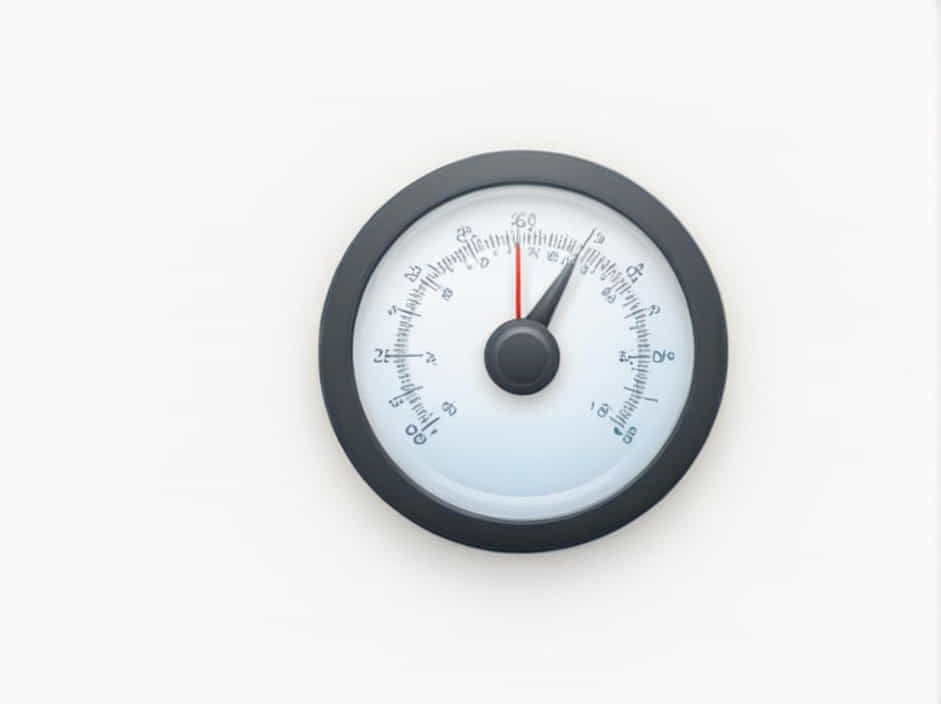Humidity plays a crucial role in various fields, including weather forecasting, agriculture, HVAC systems, and industrial processes. Measuring humidity accurately is essential for maintaining air quality, preventing mold growth, and ensuring optimal working conditions in many industries. The instrument used to measure humidity is called a hygrometer.
This topic explores the different types of hygrometers, how they work, their applications, and why humidity measurement is important.
1. What Is a Hygrometer?
A hygrometer is a device used to measure the amount of moisture in the air. It provides information about relative humidity (RH), absolute humidity, and dew point, which helps in determining the comfort level and air quality of an environment.
2. Types of Hygrometers and How They Work
There are several types of hygrometers, each using different principles to measure humidity accurately.
2.1 Mechanical Hygrometer
A mechanical hygrometer uses organic materials, such as human or animal hair, which expand or contract based on humidity levels.
How It Works:
-
The hair absorbs moisture from the air and expands when humidity is high.
-
When the air is dry, the hair contracts.
-
A needle or dial moves based on the expansion or contraction, displaying the humidity level.
Common Uses:
-
Indoor air quality monitoring
-
Museums and art galleries to protect artifacts
-
Greenhouses and botanical gardens
2.2 Psychrometer (Wet and Dry Bulb Hygrometer)
A psychrometer consists of two thermometers:
-
A dry bulb thermometer measures the air temperature.
-
A wet bulb thermometer has a moist cloth around its bulb and measures the cooling effect of evaporation.
How It Works:
-
When water evaporates from the wet bulb, it lowers the temperature.
-
The difference between the dry bulb and wet bulb temperatures is used to calculate relative humidity using a chart or formula.
Common Uses:
-
Weather stations
-
Laboratories
-
Industrial environments
2.3 Electronic Hygrometer (Digital Hygrometer)
An electronic hygrometer uses sensors to detect humidity levels and display the results digitally.
How It Works:
-
A capacitive sensor measures changes in electrical capacitance caused by moisture in the air.
-
A resistive sensor detects humidity changes by measuring variations in electrical resistance.
Common Uses:
-
Home humidity monitoring
-
Smart home systems
-
Industrial and medical applications
2.4 Dew Point Hygrometer
A dew point hygrometer measures the temperature at which water vapor condenses into liquid.
How It Works:
-
A cooling mechanism lowers the temperature of a metal surface.
-
When condensation forms, the temperature is recorded as the dew point.
Common Uses:
-
Meteorology
-
Industrial drying processes
-
Aviation and aerospace engineering
2.5 Gravimetric Hygrometer
A gravimetric hygrometer is a laboratory instrument that measures humidity by weighing absorbed water vapor.
How It Works:
-
A drying agent absorbs moisture from the air.
-
The weight difference before and after absorption is used to determine absolute humidity.
Common Uses:
-
High-precision scientific research
-
Calibration of other hygrometers
3. Importance of Measuring Humidity
3.1 Ensuring Comfort and Health
-
High humidity can cause heat stress, respiratory problems, and mold growth.
-
Low humidity can lead to dry skin, irritated eyes, and respiratory discomfort.
3.2 Preventing Mold and Bacterial Growth
-
Humidity above 60% creates ideal conditions for mold, bacteria, and dust mites to thrive.
-
Monitoring humidity helps maintain healthy indoor air quality.
3.3 Protecting Industrial Equipment
-
High humidity can cause corrosion, rust, and electrical malfunctions in machines.
-
Industries use hygrometers to maintain stable environmental conditions.
3.4 Improving Agricultural Productivity
-
Crops require specific humidity levels for optimal growth and disease prevention.
-
Farmers use hygrometers in greenhouses and storage facilities.
3.5 Enhancing Weather Forecasting
-
Meteorologists use hygrometers to predict storms, fog, and precipitation levels.
-
Accurate humidity measurements help improve climate studies and weather models.
4. How to Use a Hygrometer Effectively
4.1 Placement Matters
-
Avoid direct sunlight, air vents, and humidifiers for accurate readings.
-
Place at chest level for the best representation of indoor air conditions.
4.2 Regular Calibration
-
Electronic hygrometers should be calibrated using salt tests or professional calibration tools.
-
Psychrometers require regular water refilling for accurate wet bulb readings.
4.3 Using Multiple Hygrometers
-
For large rooms or industrial spaces, multiple hygrometers provide better accuracy.
-
Place one near potential moisture sources and another in the driest area.
5. Choosing the Right Hygrometer
5.1 For Home Use
- A digital hygrometer with a built-in thermometer is ideal for monitoring indoor comfort.
5.2 For Industrial Applications
- Dew point hygrometers or capacitive electronic hygrometers are best for factories and storage facilities.
5.3 For Scientific Research
- A gravimetric or high-precision electronic hygrometer is necessary for accurate data collection.
Hygrometers are essential tools for monitoring and controlling humidity in various settings, from homes and greenhouses to industrial environments and meteorological studies. Different types of hygrometers, including mechanical, psychrometric, electronic, and dew point hygrometers, serve different purposes based on the level of precision required.
By using a hygrometer effectively, individuals and businesses can improve air quality, prevent equipment damage, ensure health and safety, and enhance productivity.
